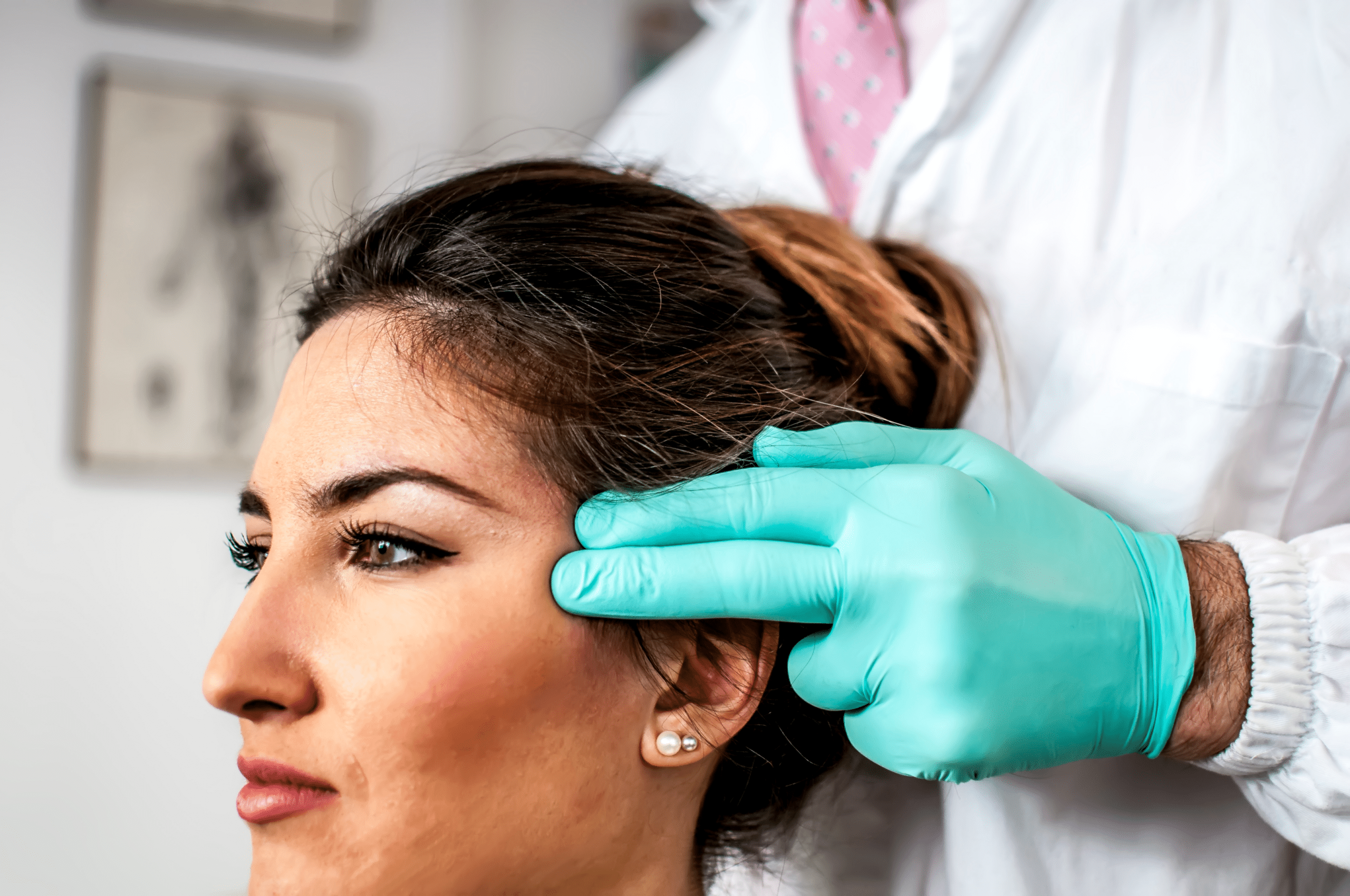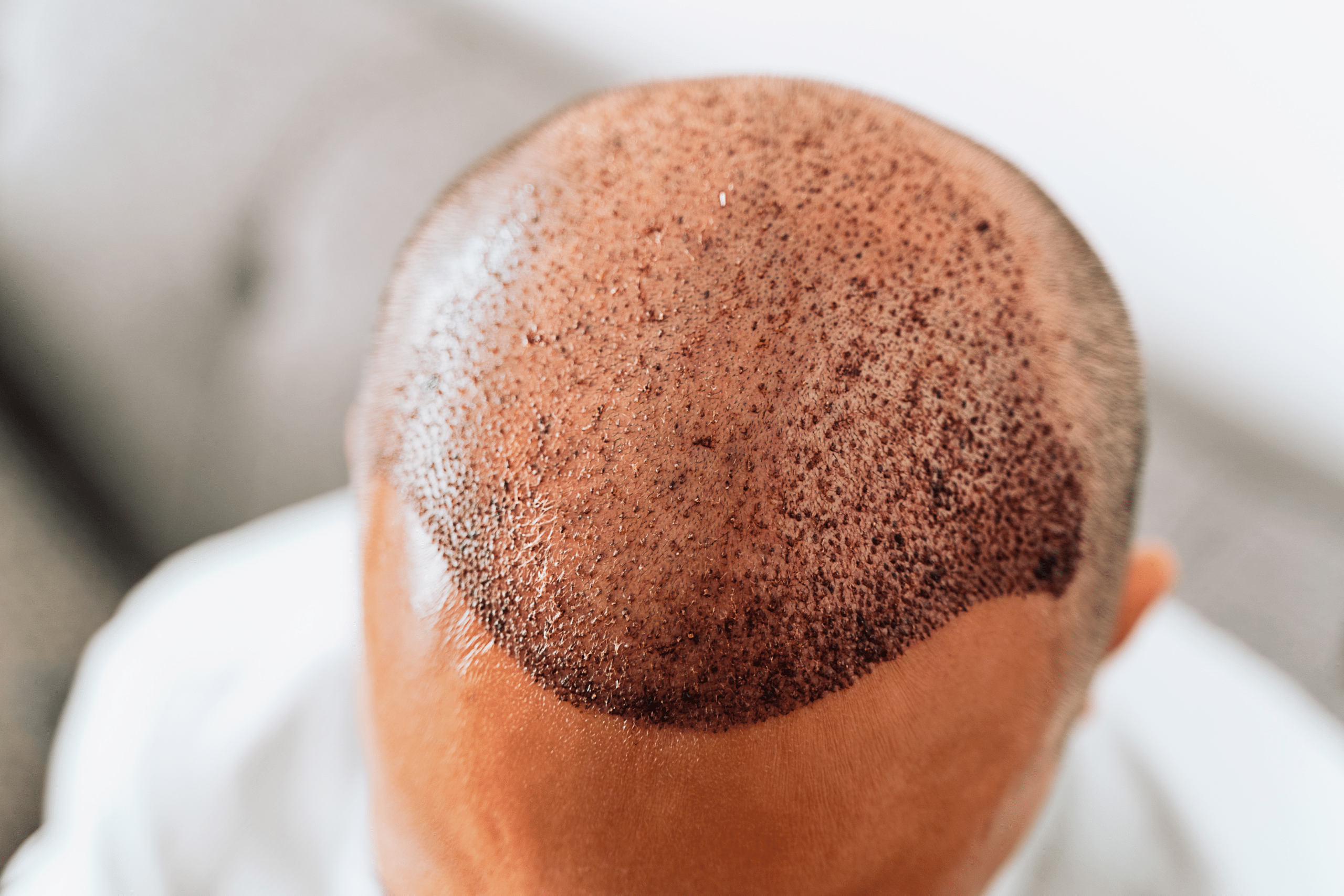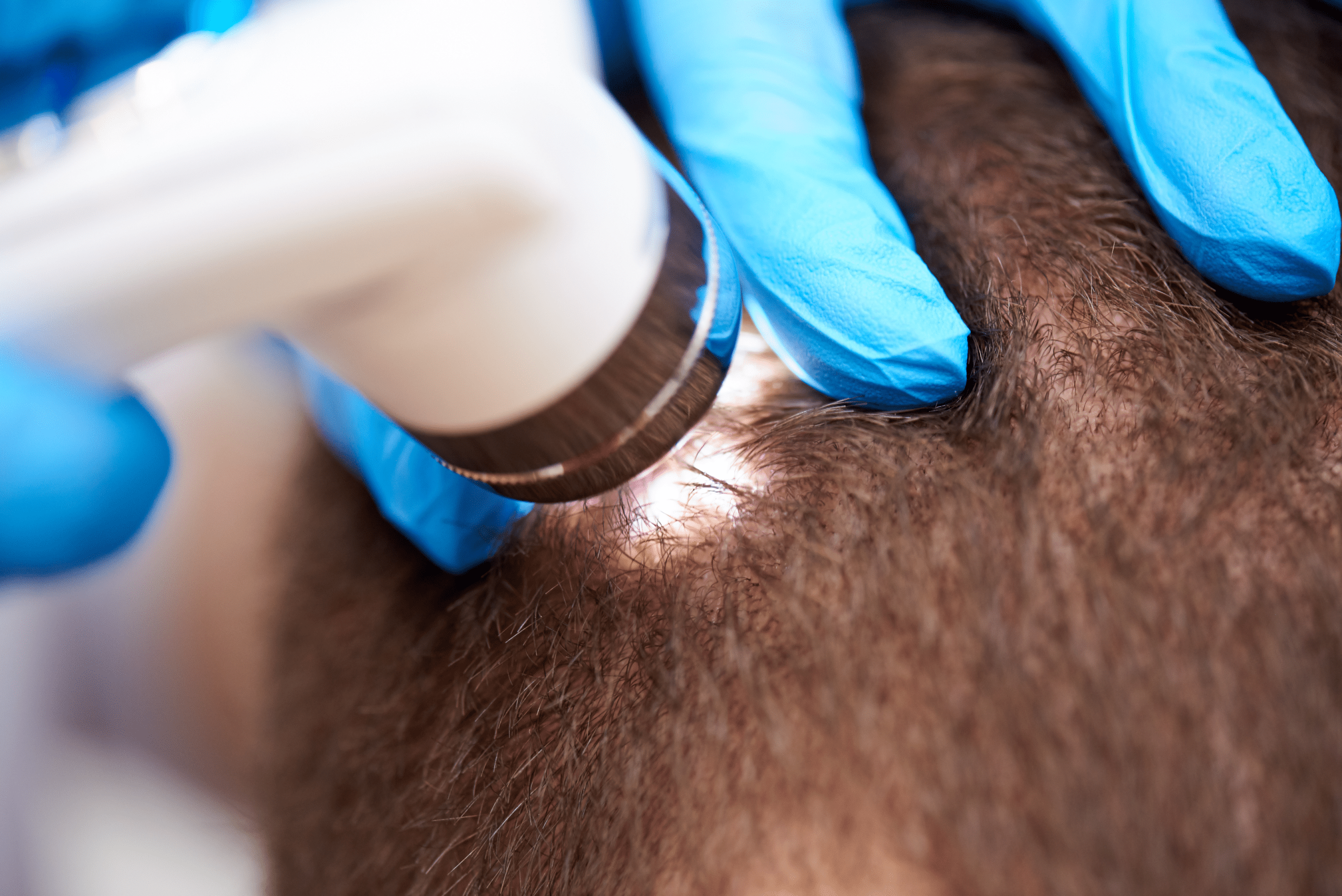Revitalize Your Locks: Your Hair Restoration Guidebook
Is hair loss taking a toll on your self-esteem? Fret not, many hair restoration options are available to help you regain your confidence and flaunt those luscious locks once more. From surgical solutions to medications and laser treatments, this comprehensive guide will walk you through the various hair restoration options to help you make an informed decision. Let’s embark on this journey toward a fuller head of hair!
Key Takeaways
- Hair loss can be caused by hereditary, hormonal, or lifestyle factors, and treatments range from medications to laser therapy.
- Hair transplant surgery is a common hair restoration method with FUT and FUE being two available techniques.
- The cost of treatment varies, but typically, insurance does not cover the cost. Preparation for consultations is recommended before undergoing any procedure.
Understanding Hair Loss
Hair loss can be a distressing experience, but understanding the root causes is the first step towards finding the right solution. Hair loss is largely attributed to genetic predisposition, hormonal influences, and the natural aging process, with female pattern hair loss being a common type experienced by women. Debunking misconceptions about hair loss is a necessary step, such as the belief that poor circulation, vitamin deficiencies, dandruff, or excessive hat-wearing cause it.
Hair loss can be managed through various treatments, including medications and surgical procedures like hair replacement surgery, to treat hair loss effectively.
Hereditary Hair Loss
Hereditary hair loss, or androgenic alopecia, is the most prevalent cause of hair loss, affecting up to 80% of cases. Males typically experience a receding hairline and baldness at the crown, while females suffer from thinning hair across the scalp without a change in the hairline. In many cases, this can lead to permanent hair loss.
Although hereditary hair loss cannot be fully impeded, therapies such as corticosteroid injections, PRP treatment, and medications like minoxidil (Rogaine) can assist in delaying the process and promoting new hair growth.
Hormonal Changes
Hormonal fluctuations can also lead to hair loss, particularly during pregnancy or menopause. Increased progesterone levels during pregnancy and decreased estrogen levels during menopause can influence the hair growth cycle, leading to thinning hair and hair follicle shrinkage.
Various hormonal imbalances, such as hypertrichosis, hirsutism, and alopecia areata, have also been linked to hair loss, and addressing these issues may help prevent further hair loss.
Lifestyle Factors
Lifestyle factors can contribute to hair loss as well. Stress, inadequate nutrition, and certain hair care habits may exacerbate the issue. A poor diet can lead to hair loss due to nutritional deficiencies, particularly in caloric intake, protein, and essential nutrients like zinc.
Furthermore, avoiding harsh treatments such as hot rollers and tight hairstyles, maintaining a balanced diet, and using mild shampoo can help prevent hair loss. Studies have confirmed the impact of stress and other sociodemographic factors on when people start losing hair.
Hair Restoration Techniques

Having examined the factors contributing to hair loss, we will now discuss the various hair restoration techniques available. These techniques include:
- Hair transplant surgery involves extracting hair follicles from a donor area and grafting them into a recipient area with hair loss. This procedure, known as hair grafting, is widely utilized and can offer natural-looking results with the expertise of a qualified surgeon.
- Medications for hair regrowth: Various medications can help stimulate hair regrowth and slow down hair loss. These medications are typically applied topically or taken orally.
- Laser therapy for hair loss: This treatment involves using low-level laser light to stimulate hair follicles and promote hair growth. It is a non-invasive and painless procedure that can be done at home or in a clinic.
Potential risks associated with hair transplant surgery include bleeding, bruising, swelling, and infection. Scalp reduction, another surgical procedure, involves removing a portion of bald skin from the scalp and pulling the adjacent hair-bearing skin over the bald area. This procedure typically only requires a local anesthetic and is suitable for areas of baldness on the top and back of the head.
Hair Transplant Surgery
Hair transplant surgery, or hair transplantation, aims to restore hair in areas of the scalp that have experienced hair loss by harvesting hair follicles from donor areas and transplanting them to the recipient areas. This is accomplished through a technique called grafting, which involves relocating hair from one area of the scalp to another, with different methods employed depending on the individual’s requirements and the surgeon’s preference.
Two hair transplant surgeries available are FUT (Follicular Unit Transplant) and FUE (Follicular Unit Extraction). Choosing a reputable clinic for hair transplant surgery is important to minimize potential risks and complications.
Medications
Minoxidil and finasteride are medications that can help stimulate hair regrowth. Minoxidil works by shortening the telogen phase, inducing the premature entry of resting hair follicles into the anagen phase, and acting as a vasodilator to improve blood flow to the hair follicles. Potential side effects of minoxidil include hair shedding, scalp irritation, and unwanted growth of facial hair.
Conversely, Finasteride works by inhibiting the action of 5-alpha-reductase, an enzyme responsible for converting testosterone to a hormone that can lead to hair loss. Possible side effects of finasteride include decreased libido, erectile dysfunction, and an increased risk of prostate cancer.
Laser Therapy
Low-level laser therapy (LLLT) is an FDA-approved treatment for hereditary hair loss that may help increase hair density. LLLT utilizes laser light to stimulate cell growth and invigorate hair follicles, potentially improving blood flow and promoting hair restoration. Clinical trials have demonstrated that LLLT can be effective in both men and women, making hair follicles thicker and stronger and promoting hair growth.
However, potential side effects of laser therapy for hair loss include headaches, burning sensations, scalp redness, itching, dryness, and scalp irritation.
Delving Deeper: Hair Transplant Surgery

We will examine hair transplant surgery methods in more detail, focusing on follicular unit transplant (FUT) and follicular unit extraction (FUE). FUT involves removing a strip of hair-bearing scalp and transplanting individual follicular units to the recipient area. This procedure requires the expertise of a skilled surgeon and offers a high graft survival rate, estimated to be approximately 60-70%.
On the other hand, FUE involves extracting individual hair follicles and transplanting them to the recipient area, resulting in less scarring and a faster recovery time.
Follicular Unit Transplant (FUT)
FUT involves the following steps:
Extracting hair follicles from the back or side of the scalp.
- Shaving the donor area and administering anesthetic injections.
- Incising the donor area to remove thin strips of hair follicles.
- Dissecting the follicles into individual units (follicular units) containing one to four hairs.
- Transplanting the follicular units into small incisions made in the recipient area.
Potential side effects of FUT include pain, edema, anaphylaxis, itching, hiccups, postoperative effluvium, folliculitis, lichen planopilaris, and numbness.
Follicular Unit Extraction (FUE)
FUE is a minimally invasive hair restoration procedure that involves the surgical extraction of individual hair follicles from the donor area, typically the back of the head or the sides, and their subsequent implantation in the desired area. This method allows for precise and targeted transplantation of hair follicles, resulting in natural-looking hair growth.
The advantages of FUE in comparison to other hair transplant techniques include:
- The absence of a linear scar
- Rapid healing
- Minimal postoperative discomfort
- Natural appearance
- A large donor pool
Medications for Hair Regrowth
Minoxidil and finasteride are commonly prescribed treatments for hair regrowth. Here is some information about minoxidil:
- Minoxidil is the only Food and Drug Administration-approved over-the-counter medication for hair loss.
- It comes in liquid or foam form with two strengths: 2% and 5%.
- Minoxidil shortens the telogen phase and induces the premature entry of resting hair follicles into the anagen phase.
- It also acts as a vasodilator to improve blood flow to the hair follicles.
- Users may experience scalp irritation when using this product.
- Additionally, it may result in unwanted hair growth on the adjacent skin of the face and hands.
Minoxidil
Minoxidil was initially developed to treat ulcers but was later found to have the potential for hair regrowth. It has the following effects on hair follicles:
- Shortens the telogen phase
- Induces the premature entry of resting hair follicles into the anagen phase
- Acts as a vasodilator to improve blood flow to the hair follicles
Potential side effects of using minoxidil for hair growth may include:
- Unwanted facial/body hair
- Dizziness
- Fast/irregular heartbeat
- Burning of the scalp
- Increased hair loss
- Inflammation or soreness at the root of the hair
- Reddened skin
- Swelling in the hands or feet
Generally, minoxidil will take effect within 4-8 weeks, although it may take 4-6 months to achieve the full results.
Finasteride
Finasteride is an oral medication that can help slow hair loss and promote regrowth. It works by inhibiting the action of 5-alpha-reductase, an enzyme responsible for converting testosterone to a hormone that can lead to hair loss. Possible side effects of finasteride include decreased libido, erectile dysfunction, and an increased risk of prostate cancer.
The suggested finasteride dosage for hair loss treatment is 1 milligram (mg) daily.
Laser Therapy for Hair Loss

Laser therapy is an FDA-approved treatment for hereditary hair loss that may help increase hair density. Here’s how it works:
- Low-level laser therapy (LLLT) or photobiomodulation therapy stimulates hair growth by emitting a low-level light penetrating the scalp.
- Clinical trials have demonstrated that LLLT can be effective in both men and women.
- LLLT helps make hair follicles thicker and stronger, thereby promoting hair growth.
However, potential side effects of laser therapy for hair loss include headaches, burning sensations, scalp redness, itching, dryness, and scalp irritation.
Alternative Hair Restoration Options
If surgical, medicinal, or laser treatments are unsuitable, alternative hair restoration options, such as hair enhancements, hairpieces, and scalp micropigmentation, are available. Hair enhancements and hairpieces can provide a temporary or permanent solution for hair loss, with some insurance companies covering the cost if medically necessary.
Scalp micropigmentation is a non-surgical cosmetic procedure that involves:
- Precisely depositing tiny dots of pigment on the scalp using thin needles
- Creating the illusion of hair follicles
- Effectively concealing bald spots or creating a shaved head look.
Hair Enhancements and Hairpieces
Hair enhancements and hairpieces can provide an immediate solution to hair loss, offering a wide selection of styles and colors to choose from. Synthetic hair enhancements, liners, and silk head scarves are recommended for individuals experiencing hair loss. The advantages of utilizing hair enhancements and hairpieces for hair loss include increased confidence and self-esteem. In contrast, the disadvantages may include potential expense, the need for regular maintenance and styling, discomfort or itchiness for some people, and a shorter lifespan for synthetic hair enhancements compared to human hair enhancements.
Scalp Micropigmentation
Scalp micropigmentation is a non-invasive cosmetic procedure that involves the precise application of pigments on the scalp to create the illusion of real hair follicles. It is a specialized treatment that does not necessitate surgery or anesthesia and can be expected to last for up to 6 years or more, depending on the procedure and lifestyle, with touch-ups required after 3 to 7 years.
Preparing for a Hair Restoration Consultation
Before seeking a hair restoration consultation, researching your options and preparing a list of questions for your doctor is recommended. During the consultation, you can expect the doctor to:
- Discuss the various treatment options available
- Recommend the most appropriate treatment for your case
- Address your expectations and concerns
- Evaluate whether you are a suitable candidate for the procedure
- Provide information about the procedure, including the recovery process and timeline
The Recovery Process
Following hair restoration treatments, the recovery process varies depending on the method used. The average recovery time following hair transplant surgery is generally 1 to 2 weeks, during which some scabbing and redness in the transplanted area may be present. Adherence to the post-procedure care instructions provided by your surgeon is key for optimal healing.
Potential side effects of hair restoration treatments may include edema, pain, itching, lost grafts, scabbing, hair thinning, cysts, sterile folliculitis, lichen planopilaris, and numbness.
Cost and Insurance Coverage
The cost of hair restoration treatments can vary significantly, with hair transplant surgery in the United States typically ranging between $3,000 and $15,000, with the average treatment cost being approximately $10,000. The cost of hair transplant surgery can vary considerably worldwide, with factors such as economic conditions, healthcare systems, and surgeon expertise influencing the price difference.
Unfortunately, insurance typically does not cover surgical procedures to treat baldness. However, a bottle of minoxidil or finasteride typically costs approximately $20 to $70 per month. Health insurance typically does not cover the cost of hair restoration medications as they are often considered cosmetic treatments.
Summary
In conclusion, hair loss can be a distressing experience, but with the various hair restoration options available, there is hope for regaining a fuller head of hair. From hair transplant surgery and medications to laser therapy and alternative options like hair enhancements and scalp micropigmentation, there is a solution for every individual experiencing hair loss. It’s essential to consult with a medical professional to discuss your options, understand the potential risks and side effects, and choose the most suitable treatment for your specific situation.
Don’t let hair loss hold you back any longer. With the knowledge and understanding of the various hair restoration options, you can take the first step towards regaining your confidence and embracing the luscious locks you deserve. The journey to a fuller head of hair starts now!
Frequently Asked Questions
How much does it cost to restore your hair?
Hair restoration surgery can range from $3,000 to more than $15,000, with an average cost of around $7,500. This successful treatment is available for both men and women.
Can you actually restore hair?
Yes, you can restore hair with some treatments available. These may include topical solutions such as shampoos, medications like Propecia, and light therapy to slow down or stop hair thinning — and even regrow some hair that you thought was gone forever. However, the ability to regrow hair depends on the integrity of the follicle.
Where Can I Get Help with Hair Restoration in Nashville?
If you’re looking for a reliable place to get help with hair restoration in Nashville, HPI Hair is an excellent choice. Renowned for their expertise in treating various hair loss conditions, they offer a range of effective solutions tailored to individual needs.
What is the most common cause of hair loss?
Hereditary hair loss, or androgenic alopecia, is the most common cause of hair loss, affecting up to 80% of cases.
Are there any medications available for hair regrowth?
Yes, medications like minoxidil and finasteride are available for hair regrowth and are commonly prescribed by doctors.








